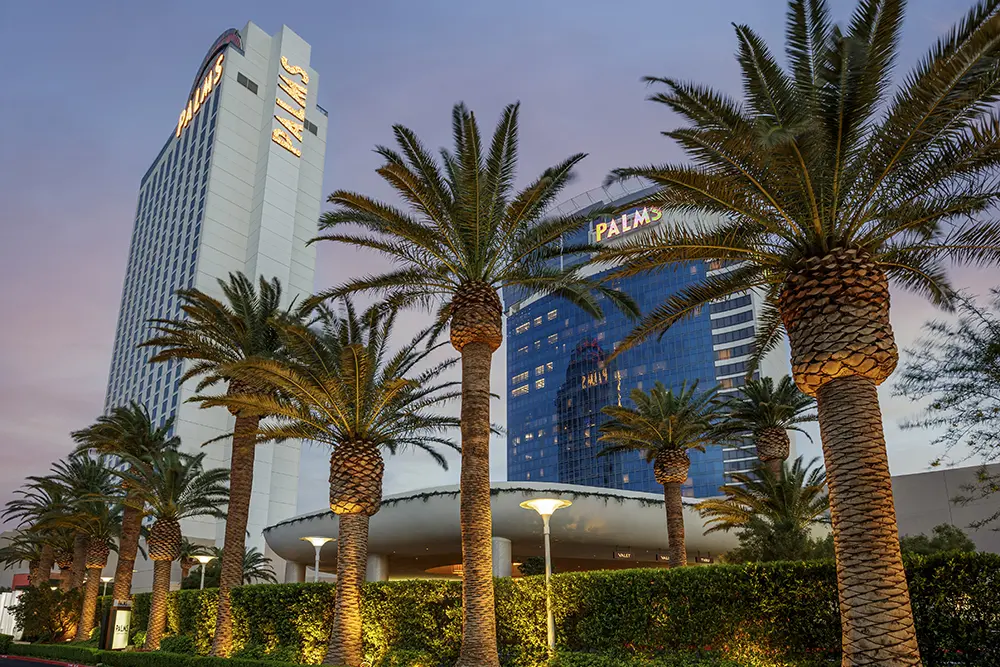Las Vegas bets big on the American Film Market
The stakes are high in Las Vegas, but this time it’s not about presidential elections. The American Film Market (AFM) has shifted its location to the bustling and vibrant city of Las Vegas, aiming to prove its indispensable value to the film industry.
A new chapter for AFM amid challenges
Once a buzzing hub for B-movie deals, the AFM has faced turbulent times over the past few years. The pandemic, Hollywood strikes, hospitality issues, and soaring participation costs have all taken their toll. Now, nestled among the neon lights and casino floors, the market hopes to reaffirm its significance to the global film industry.
Scott Shooman, head of film at AMC Networks, stresses the importance of this moment, saying, “This is a crucial opportunity for the AFM to demonstrate that America needs a significant film market.”
The battle for relevance
Among those eyeing the AFM’s potential downfall is the Toronto Film Festival, which plans to launch its own film market in 2026. As the AFM launches new packages, many U.S. representatives either skip the trip to Vegas or keep it brief. For instance, Nick Shumaker, head of AC Independent, opted to attend meetings in L.A. before heading back without a stop in Vegas.
Shifts in the indie landscape
Shumaker also points out that the indie market is undergoing significant shifts. With numerous U.S. producers juggling immense production and development backlogs, the next couple of markets could be highly revealing. Many say that the busiest producers will increasingly seek earlier partnerships with U.S. distributors.
Shooman adds, “Ultimately, it’s the projects that define the marketplace.”
The changing dynamics of film financing
Sarah Schweitzman from CAA Media Finance notes the market’s heavy focus on genre and action films, with a discerning eye for high-quality scripts, filmmakers, and casts. Stuart Ford of AGC Studios observes that many films fall in the $30 million-and-below range, with fewer big-budget projects.
However, the alignment between international buyers’ demands for robust U.S. theatrical releases and the cautious approach from U.S. buyers for 2024 presents a significant challenge.
Budget battles and global shoots
Production budgets have soared in the streaming era, but many indie projects with inflated budgets struggle to find buyers willing to invest. As filmmakers seek to cut costs, more productions are moving overseas to leverage tax incentives and cheaper crews.
“People are having to shoot in more generous places to get budgets down,” explains Shooman, pointing to countries like the UK, Canada, and Australia that fund filmmaking as an art form.
A global perspective
Shumaker, representing the psychological horror “Victorian Psycho”, notes a shift eastwards for production, citing Canada and Eastern Europe as new hotspots. Ford highlights the benefits of shooting his film “The Last Druid” in Spain, which offers co-production equity, strong incentives, and qualifies the film as European.
While cost-cutting drives these moves, they also reflect the growing international flavor of award seasons and audiences’ evolving tastes. Shooman points out, “There’s an opportunity for everyone as the world becomes a smaller place and people are more open to international films.”
The evolving Academy space
Shooman highlights the increasing international representation in the Academy Awards, with films like “The Zone of Interest” and “Anatomy of a Fall” making waves in major categories. The Oscar race for this year includes “Emilia Perez”, a Netflix musical thriller directed by Jacques Audiard and starring Karla Sofía Gascón, Zoe Saldaña, and Selena Gomez.
Shooman believes this trend indicates a more global approach to content: “The world has gotten a lot smaller for content.”
Thriving indie sector despite challenges
Despite the numerous upheavals in the U.S. indie film scene, the theatrical indie sector is thriving. Shooman notes, “We’ve seen our biggest theatrical opening weekends this year.”
Notable successes from key players like A24, Neon, and Magnolia highlight the resilience and ongoing opportunities in the market.
Genre trends and future shifts
While genre and horror films have gained popularity post-pandemic, Dylan Leiner of Sony Pictures Classics observes a recovery in non-horror genres. Looking forward, Leiner acknowledges the AFM isn’t the only U.S. film event at a crossroads. Sundance and Toronto are also navigating transitions and potential shifts in the coming years.
Leiner points out the logistical challenges of early fall markets, as packages often come together last minute, making coordination difficult during popular vacation periods.
As the AFM seeks to reinvent itself in Las Vegas, industry players are watching closely to see if this gamble will pay off. With the global film landscape evolving, the stakes have never been higher.
Stay tuned for more updates on the evolving film industry, and join the conversation by sharing this article on social media!

 Italian
Italian







